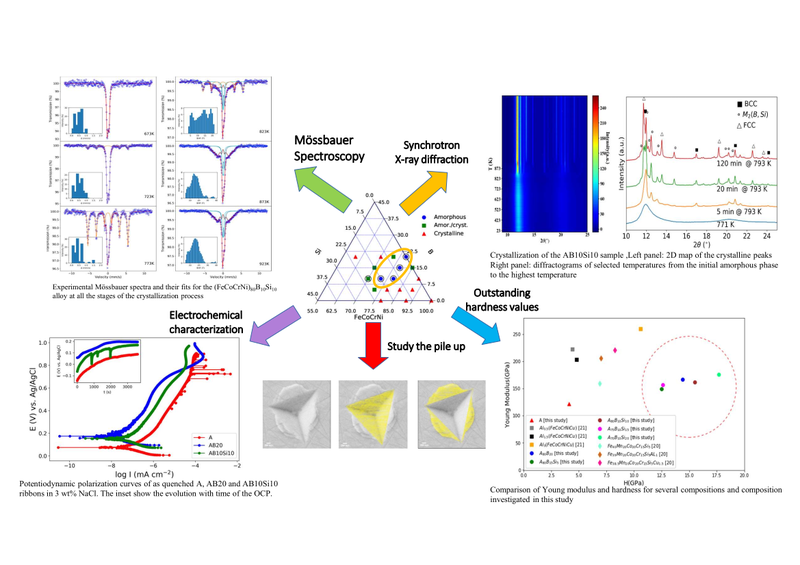Seyedeh Leila Panahi defenses her thesis on new Fe base High entropy metallic glass alloys.
May 09, 2023
Seyedeh Leila Panahi defended her thesis co-supervised by Pere Bruna and Eloi Pineda on May 8 at the campus Castelldefels. Entitled “Study of relaxation phenomena and local structure evolution in metallic glasses by means of Mossbauer and mechanical spectroscopy”
New research shows that global demand for alloys with unique properties for various applications increased drastically, and among all them the demand for high entropy and metallic glasses in the industry is increasing at a rate of 8.4% until 2024. High entropy and metallic glass alloys are two different classes of materials with unique properties. High entropy alloys (HEAs) are multicomponent solid-solutions of several elements, all of them in equal or near-equal atomic percent, this leading to a high entropy of mixing. Metallic glasses (MGs) are obtained by fast- quenching of metallic melt, avoiding crystallization and obtaining a metallic solid with a liquid- like atomic-scale structure.
According to previous studies, the relative simplicity of the metallic bonding makes these materials adequate for fundamental studies on the glassy state and glass transition related phenomena. On the other hand, metallic glasses show some superior properties with respect conventional crystalline alloys; metallic glasses have exceptionally high elastic limit and resilience, and an extremely low loss coefficient. These properties combined with the lack of microstructural defects and grain boundaries make metallic glasses good candidates for manufacturing small components and micro-electro-mechanical devices. Moreover, the use of these systems in real applications requires good corrosion resistance, and together with their outstanding mechanical properties, such as excellent wear resistance, high strength and exceptional ductility, make them an excellent choice for industrial applications.
In this Ph.D. thesis, we report the production of new HEMGs within the (FeCoCrNi)100-x-yBxSiy compositional system. The role of B and Si in the formation of (FeCoCrNi)100-x-yBxSiy high-entropy metallic glasses and their thermal properties are studied. The microstructural evolution has been studied by X-ray diffraction and Transmission Mössbauer Spectroscopy, Also, the mechanical properties of the samples have been studied by Nanoindentation and give us an excellent view of hardness, elastic modulus, and wear resistance of each sample. Eventually, the electrochemical behaviour of these alloys was studied by means of linear polarization resistance (LPR) measurements and electrochemical impedance spectroscopy (EIS) in a 3 wt.% NaCl solution. The effect of corrosion was characterized by using X-ray photoelectron spectroscopy (XPS) and the surface morphology was checked using a scanning electron microscope (SEM).

Share: